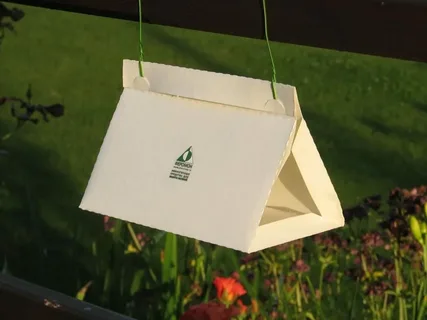Agricultural Pheromones Market dynamics driving adoption among sustainable farming practices

The Agricultural Pheromones Market is experiencing rapid traction as the agriculture industry shifts toward more sustainable, eco-conscious farming systems. Pheromone-based pest control offers a non-toxic, species-specific, and environmentally safe alternative to synthetic pesticides. As global awareness and regulatory pressures increase, the dynamics shaping this market are pushing agricultural stakeholders to prioritize these bio-rational products in integrated pest management (IPM) programs.
Rising Demand for Eco-Friendly Pest Control Solutions
One of the major dynamics driving the adoption of agricultural pheromones is the increasing global demand for residue-free and environmentally friendly crop protection solutions. Consumers are more concerned than ever about food safety, pesticide residues, and ecological impact. Consequently, producers are turning to biologicals such as pheromones to align with market expectations and gain premium pricing advantages.
Retailers and exporters are also adopting stricter quality standards, particularly in Europe and North America, where importing food treated with harmful chemicals is restricted. Agricultural pheromones, being non-toxic and non-residual, allow producers to meet export compliance without sacrificing pest control effectiveness.
Government Policies and Regulatory Support
Governments worldwide are enacting policies that support the reduction of chemical pesticide use in agriculture. The European Union's Farm to Fork Strategy, for example, targets a 50% cut in pesticide use by 2030. Such regulatory frameworks create fertile ground for the pheromone market to flourish.
Subsidies, grants, and fast-track approvals for pheromone-based products are encouraging manufacturers and farmers to embrace these solutions. In countries like India and Brazil, governmental extension services are actively promoting pheromone traps for major crops like cotton, maize, and rice, accelerating regional market penetration.
Role of Integrated Pest Management (IPM) Adoption
The global push for IPM implementation is significantly influencing the uptake of agricultural pheromones. IPM relies on multiple pest control strategies working in synergy, with pheromones playing a pivotal role in monitoring, mating disruption, and mass trapping.
Large farms and cooperatives are integrating pheromones to reduce reliance on synthetic chemicals, improve biodiversity, and maintain long-term soil and crop health. Even in smallholder settings, simple pheromone lures and traps are proving effective in reducing pest loads when applied as part of IPM models.
Technological Advancements Enhancing Application
The usability and performance of pheromone products have improved significantly, thanks to technological innovations such as microencapsulation, controlled-release dispensers, and aerial application through drones. These advancements are reducing the cost per acre and expanding the range of crops and environments where pheromones can be deployed.
Startups and R&D centers are also developing species-specific pheromone blends to increase efficacy in tropical and subtropical climates. This scientific precision is increasing adoption among farmers looking for reliable and scalable solutions for region-specific pests.
Consumer Trends Supporting Organic and Sustainable Farming
As organic farming continues to grow, especially in North America, Europe, and parts of Asia, the need for organic-certified pest control products is rising. Pheromones, being natural or nature-identical, fit seamlessly into organic standards and are widely accepted by certification bodies.
Furthermore, the rise of eco-labeling and traceable food supply chains is pressuring farmers to adopt visible sustainability practices. Pheromone traps and dispensers are often physically visible in fields, providing a form of "proof of practice" that appeals to transparency-conscious retailers and end consumers.
Education and Awareness Campaigns
Several market players, NGOs, and agricultural universities are launching farmer training programs and awareness campaigns to promote the benefits of pheromones. Demonstration plots, field trials, and multilingual information materials are being deployed to ensure that even farmers with limited formal education can understand the value of adopting these biological tools.
As farmers witness real-time results, including lower pest incidence and higher yields, pheromone adoption becomes more widespread. Word-of-mouth remains a powerful tool, particularly in rural farming communities, and well-documented success stories often lead to viral expansion.
Cost-Effectiveness in the Long Run
While the upfront cost of pheromone products may seem higher than conventional pesticides, long-term cost benefits are becoming evident. Reduced input frequency, lower environmental remediation expenses, improved crop quality, and sustained soil health contribute to overall profitability. Additionally, pheromones do not induce pest resistance, unlike chemical pesticides, which helps avoid future treatment costs.
Cost-sharing initiatives by cooperatives and agri-input retailers further reduce barriers for small and marginal farmers, especially in developing economies.
Market Feedback Loop and Industry Momentum
The Agricultural Pheromones Market benefits from a positive feedback loop—as adoption increases, manufacturers scale up production, lowering unit costs and expanding product availability. Distributors and retailers, recognizing higher demand, allocate more shelf space and promotional efforts to pheromones, further pushing market expansion.
This cycle is strengthened by the entry of investors and multinationals, drawn by the sector’s growth potential and sustainability credentials. The result is a vibrant and competitive ecosystem that is continuously innovating and educating stakeholders.
Conclusion
The dynamics driving the Agricultural Pheromones Market go far beyond pest control. They reflect a paradigm shift in how food is produced, marketed, and consumed. From policy mandates and tech innovations to farmer awareness and consumer demand, every factor is aligning to push pheromones from niche to mainstream. As the world prioritizes sustainable agriculture, these non-toxic, efficient solutions are poised to redefine pest control practices across continents and crop types.
- Art
- Causes
- Crafts
- Dance
- Drinks
- Film
- Fitness
- Food
- Games
- Gardening
- Health
- Home
- Literature
- Music
- Networking
- Other
- Party
- Religion
- Shopping
- Sports
- Theater
- Wellness


